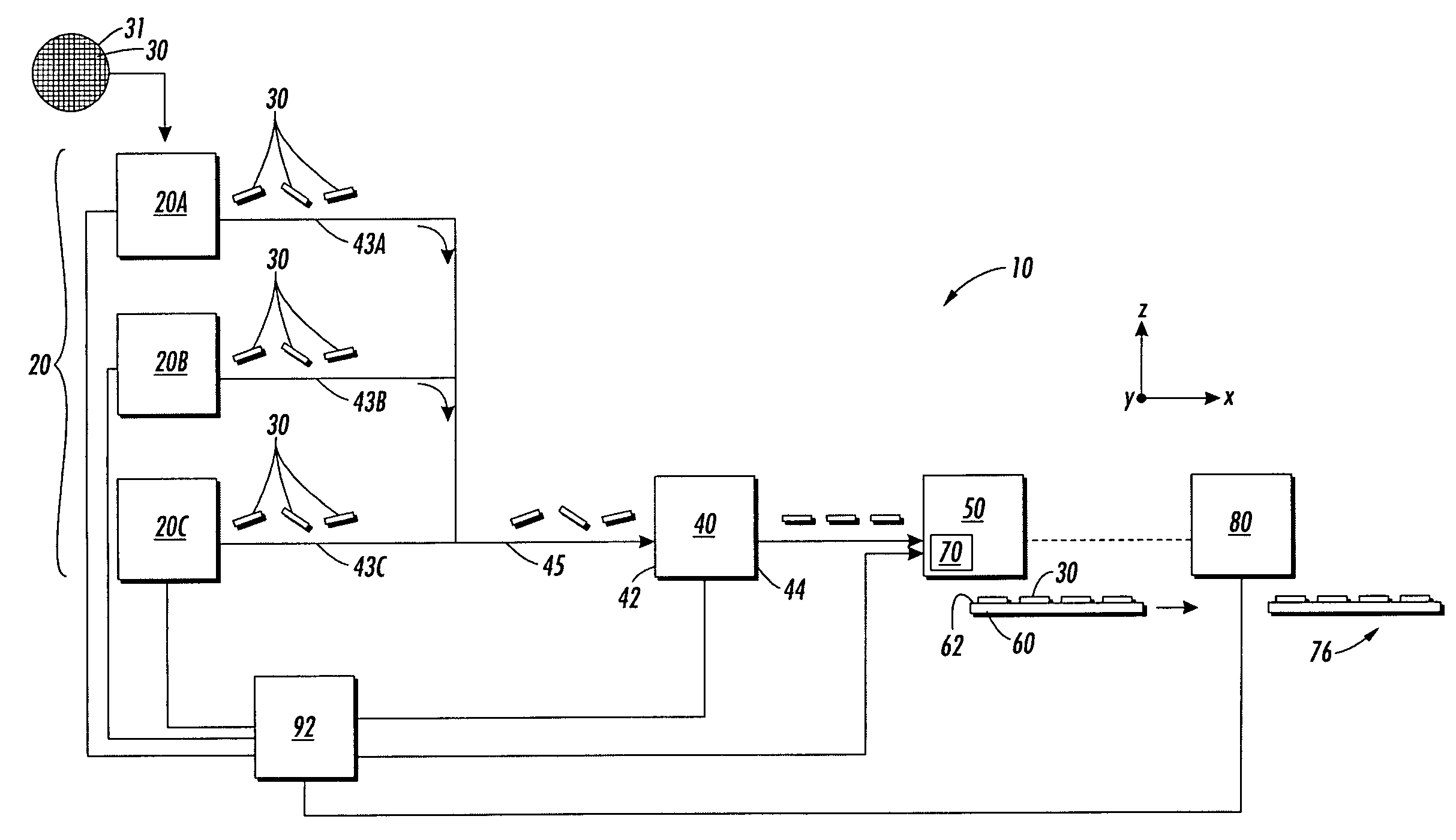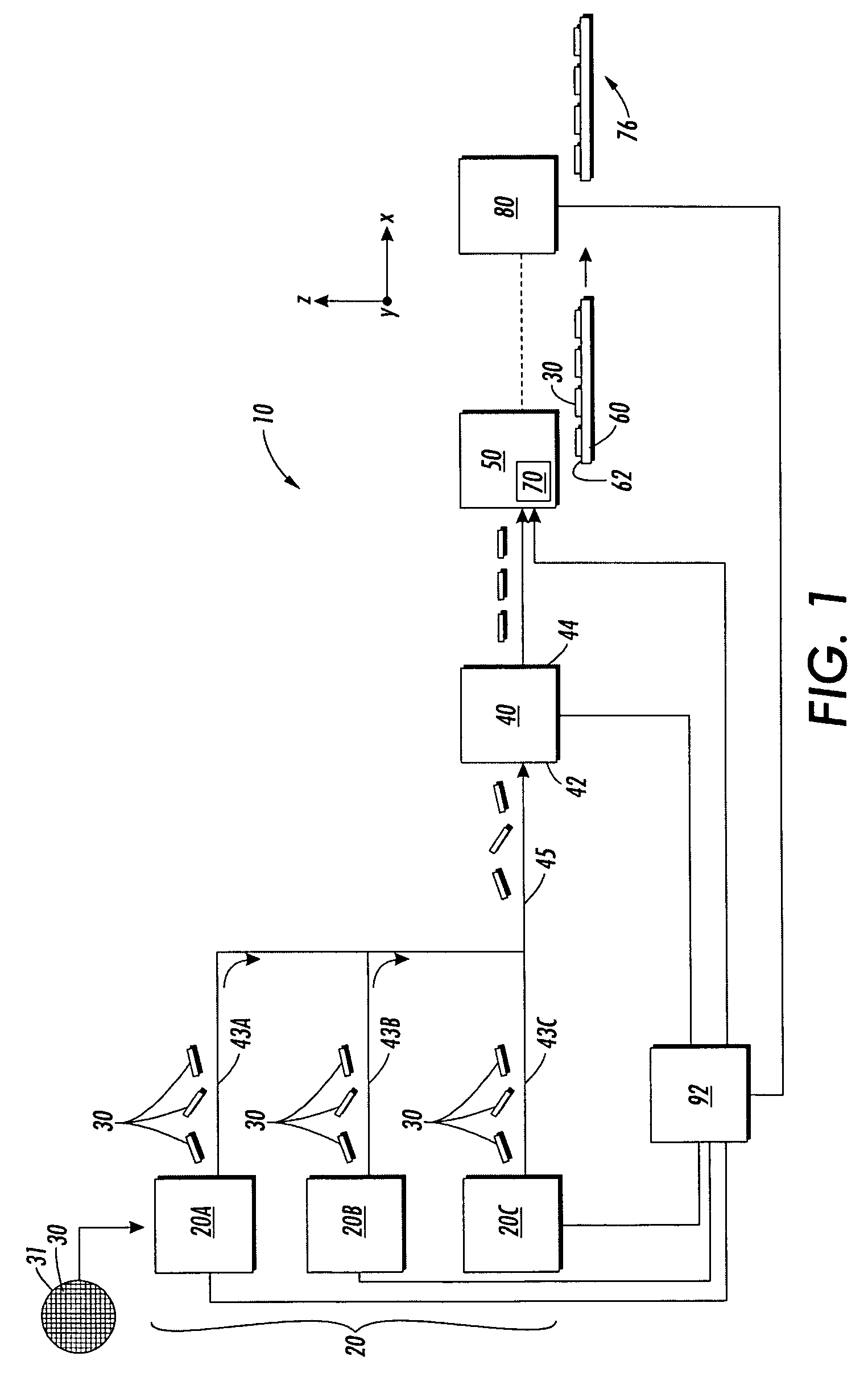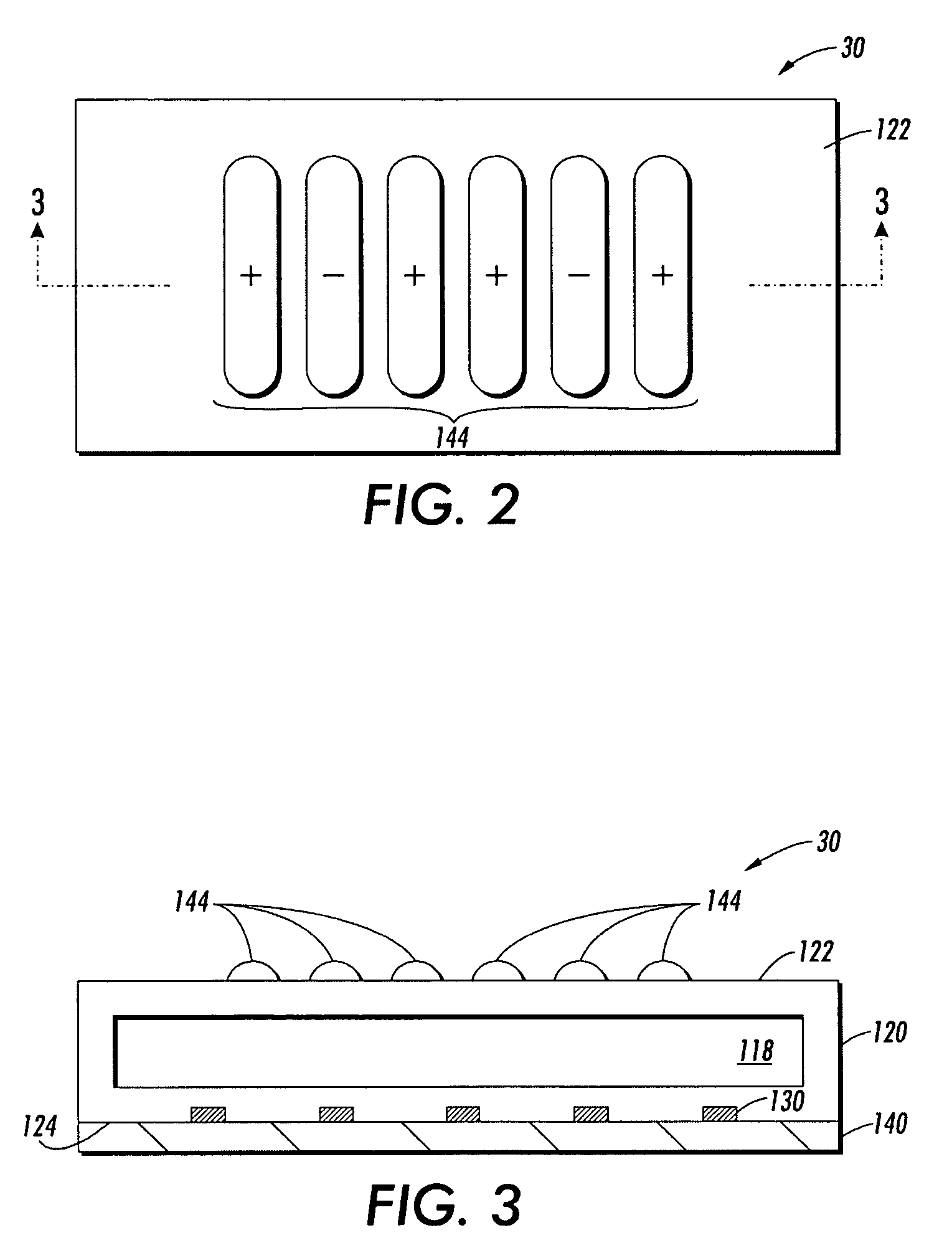Xerographic micro-assembler
a micro-assembler and assembler technology, applied in the direction of individual semiconductor device testing, semiconductor/solid-state device testing/measurement, instruments, etc., can solve the problems of limiting process, incompatibility with micron-sized integrated circuit structures, and severe limitations on the shape, size and distribution of components
- Summary
- Abstract
- Description
- Claims
- Application Information
AI Technical Summary
Benefits of technology
Problems solved by technology
Method used
Image
Examples
generalized example embodiment
[0034]FIG. 1 is a schematic side view of an example embodiment of a micro-assembler 10 according to the present invention. Micro-assembler 10 includes one or more pre-processing units 20 (e.g., three such units 20A, 20B and 20C) adapted to modify, form or otherwise process different types (sets) of micro-objects 30, which are described below.
[0035]In an example embodiment reflecting the simplest case, pre-processing units 20 serve as reservoirs for micro-objects 30 that are pre-formed, e.g., as micro-chip-based micro-objects formed in a semiconductor fabrication facility using, for example, standard semiconductor processing techniques. In another example embodiment, pre-processing units 20 are adapted to form the micro-objects from a larger object, such as a semiconductor wafer having the micro-objects formed therein. FIG. 1 illustrates an example of this embodiment wherein a wafer 31 is provided to one of the pre-processing units for dicing into individual micro-objects 30. In anot...
PUM
| Property | Measurement | Unit |
|---|---|---|
| size | aaaaa | aaaaa |
| size | aaaaa | aaaaa |
| charge | aaaaa | aaaaa |
Abstract
Description
Claims
Application Information
 Login to View More
Login to View More - R&D
- Intellectual Property
- Life Sciences
- Materials
- Tech Scout
- Unparalleled Data Quality
- Higher Quality Content
- 60% Fewer Hallucinations
Browse by: Latest US Patents, China's latest patents, Technical Efficacy Thesaurus, Application Domain, Technology Topic, Popular Technical Reports.
© 2025 PatSnap. All rights reserved.Legal|Privacy policy|Modern Slavery Act Transparency Statement|Sitemap|About US| Contact US: help@patsnap.com



